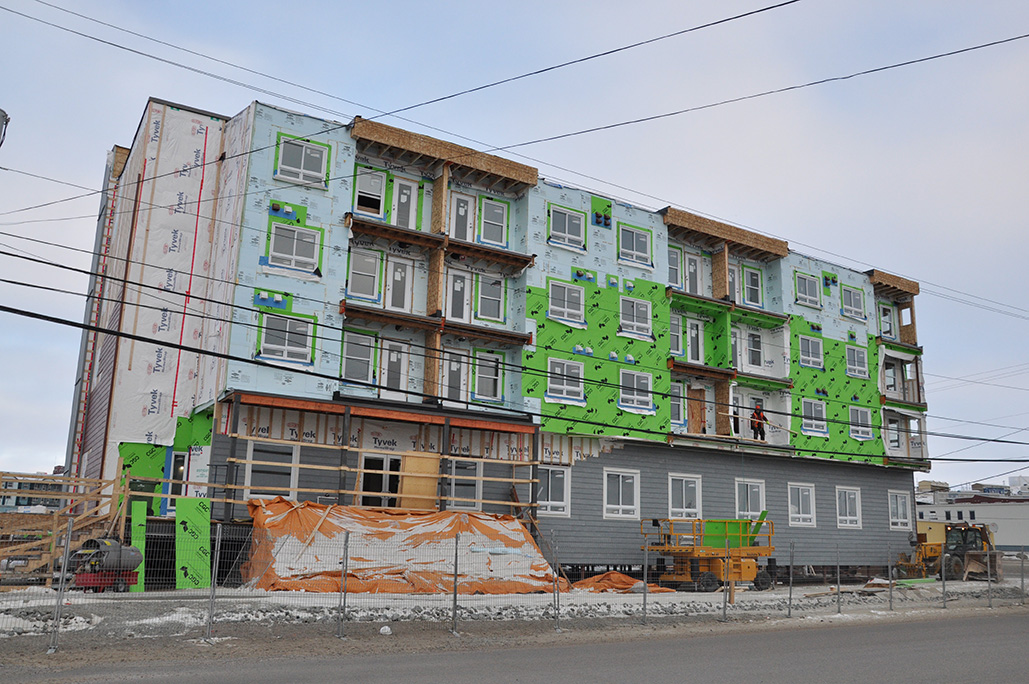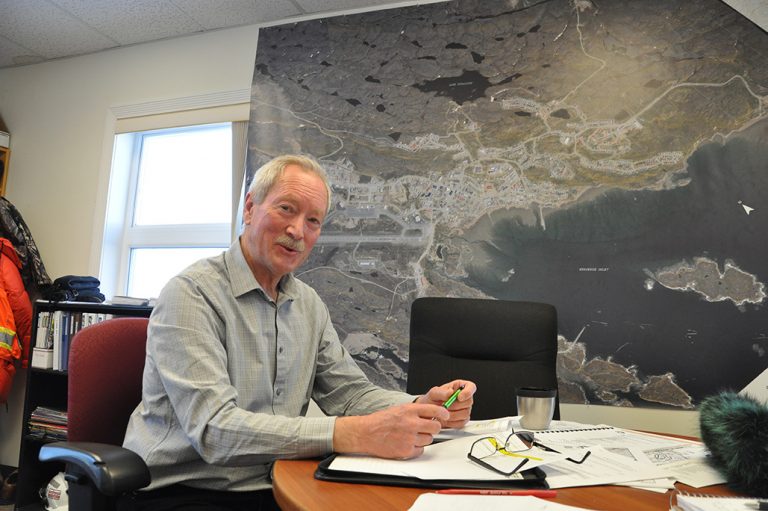A building boom is underway in Iqaluit
But the increased development won’t be enough to put a dent in city’s housing shortage.

As winter returns to Iqaluit, snow and ice settle on a changed city landscape: Six new major developments began construction this past sealift season. That includes 92 residential units and 179 hotel rooms, according to the city’s planning and development office.
The city saw almost three times more residential units permitted in 2019 than last year.
But most of the 92 units approved this year may go towards government staff housing, rather than public housing units needed to address the city’s long-standing housing crisis, said Mark Brodrick, Iqaluit’s new director of planning and development.
Last year, Iqaluit needed nearly 200 more units to meet its housing demands, according to the Canadian Mortgage and Housing Corp. Iqaluit also needs as many as 105 new units per year to keep up with its growing population, according to the city’s general plan.
Meanwhile, commercial development saw well-established corporate landowners, mostly based outside Nunavut, gain even more properties.
“It’s no secret that there’s a lot of competition for housing and that the city needs more residential units,” Brodrick told Nunatsiaq News.
Brodrick arrived from B.C. about two months ago to fill the director position, which had been vacant for two years, he said from his new Iqaluit office.
So far he has been burying his nose in report after report to learn about the city’s current challenges and plans, Brodrick said. Those include balancing new developments with their impact on current infrastructure, making Iqaluit’s water source more secure, and making the city more livable for everybody.
“I go down these rabbit holes, which are necessary but time-consuming. I can only take so much before I have to go for a walk.”
Those reports include the first-ever development activity reports — one each for 2017 and 2018 — produced by the city, Brodrick said.
Last year, 31 residential units were approved by development permits — the second-lowest number in the last decade, said the 2018 report.
The annual average number of residential units approved in the last decade is 82, which the report said is consistent with a “medium growth rate.”
But the average over the past five years has been well below that — 42 units per year.
On the commercial side, two new hotels began construction this past season — Aqsarniit Hotel and Conference Centre on Federal Road and a hotel across from the Tamaatavik Boarding Home, on the site of the old Friendship Centre. The hotels will help fill a hole left by the closure of local hotels in recent years.
The city’s current infrastructure can handle the boom of development Iqalungmiut saw over the 2019 construction season, Brodrick said — at least for the short term.
There are some issues that have reached “critical status” — like Iqaluit’s water supply, which needs a longer-term solution — and others that need work in the near future, like the city’s transportation management and general plan, said Brodrick.
For example, with the infrastructure developed by QC for its hotel, the city-owned land around the hotel could be further developed, said Brodrick.
“Could Federal Road be less industrial and more commercial or even residential? Is public transportation possible for the City? What can we do to encourage citizens’ use of active transportation—that is, without a vehicle?” Brodrick asked.
But with a new council just sworn in, city administration will be looking to elected officials for direction on strategic goals and priorities, he said.







